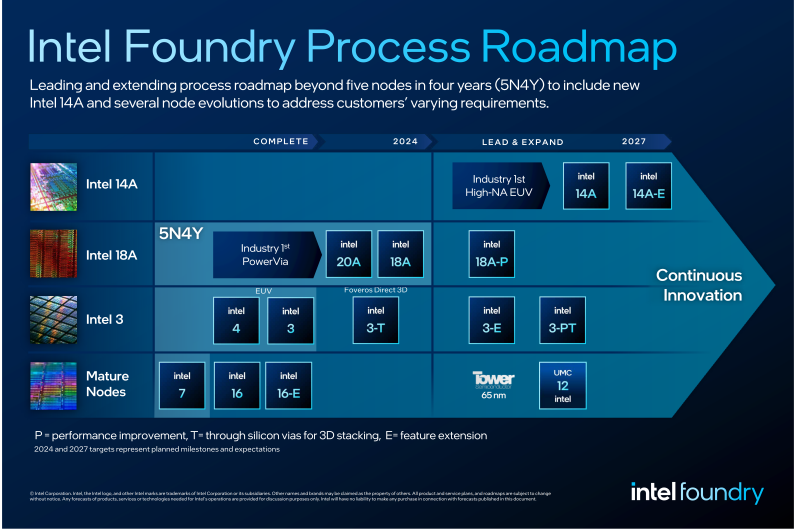
Intel recently unveiled its updated wafer fabrication roadmap at the "IFS Direct Connect" event. The roadmap now incorporates the Intel 14A process into the advanced node plan, with additional specifics regarding node evolution. Notably, Intel has revised the roadmap, advancing the production of Intel 14A to 2026 and introducing a new 1nm process (Intel 10A), expected to commence trial production in 2027.
During the "IFS Direct Connect" event, Intel presented Intel 10A to the media, which had been under embargo until now. It is anticipated that Intel 10A will enter the production/development (non-mass production) phase in 2027, while Intel 14A (1.4nm) will commence production ahead of schedule in 2026. Intel is also committed to constructing a fully autonomous AI-driven wafer factory.
Keyvan Esfarjani, Intel's Executive Vice President and General Manager of Manufacturing and Supply, highlighted the company's latest developments, showcasing the future technological roadmap. He mentioned that Intel aims to launch the Intel 10A node by the end of 2027 to address gaps in EUV technology production.

Following Intel's roadmap, assuming a successful launch of the Intel 18A process next year, a 1.4nm process in 2026, and a leap to a 1nm process in 2027, Intel is poised to lead competitors, including TSMC. TSMC expects to achieve mass production of a 2nm process in 2025, followed by a 1.4nm process.
Intel has not disclosed specific details about the Intel 10A node but has hinted at double-digit percentage improvements in power/performance. Intel CEO Pat Gelsinger previously indicated that the critical threshold for new processes is around 14% to 15%, suggesting similar improvements for Intel 10A and Intel 14A.
Currently, Intel's upcoming Intel 20A is set to integrate two new technologies: PowerVIA and GAAFET (RibbonFET). The Intel 18A production facility is located in Arizona, with plans for Intel 10A node production undisclosed, while expansion continues in Ohio, Israel, Germany, Malaysia, and Poland.
Additionally, Intel is actively increasing advanced packaging capacity for Foveros, EMIB, silicon photonics (SIP), and HBI (hybrid bond interconnect).
Intel recently concluded all internal packaging work for standard packages, focusing on advanced packaging, with standard packaging tasks now handled by OSAT (Outsourced Semiconductor Assembly and Test) factories.
Apart from existing facilities, the company plans to invest $100 billion in expanding and establishing production bases in the next five years, significantly boosting Intel's future capacity.
Intel reiterated its commitment to integrating AI into all stages of the production process, from capacity planning and forecasting to yield improvement and actual manufacturing operations, striving to achieve the "10X moonshot" plan. While specific timelines were not provided, the company mentioned that AI collaborative robots, "Cobots," would work alongside humans in future wafer factories.




